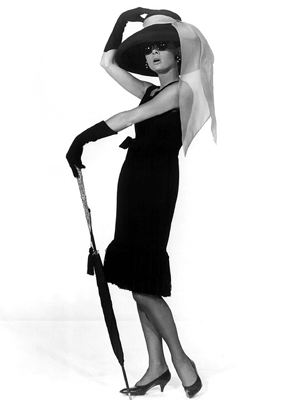A series developed by Deborah Bowes, PT, DPT, GCFP
Deborah Bowes, PT, DPT, GCFP, developed Pelvic Health and Awareness after the birth of her two daughters left her without bladder control. Combining her experience as Feldenkrais teacher, her work in anatomy and physiology, and training as a Physical Therapist, she created this series of six extremely slow and gentle explorations of the pelvic floor.
"Pelvic Health and Awareness" takes a whole body approach; you will connect and balance your pelvic floor in relationship with your entire body, from legs to hips to ribs to breath, and side-to-side.
Hello to Pelvic Health - Starting With A Deep Breath
A Relaxing Session Connecting Upper and Lower Diaphragms For Relaxation and Power
For this first lesson, we take a quick tour of the pelvic floor anatomy and establish vocabulary of bones, muscles, fascia, diaphragms and tendons. The lesson continues either seated or, preferably, lying on your back. Using breath, sound, and awareness, we will sense into this delicate/strong area.
Pelvic Health and Awareness 2 -Left and Right Sides of the Pelvic Floor
Surprising Connections Between the Breath and Sides of the Pelvic Floor
This week, we wIll briefly review the pelvic floor anatomy and explore the spectrum of all Six Healing Sounds. Then it's to the floor to explore the left and right sides of the pelvic floor. We will be tipping the legs to the side and then drawing them back to center with coordinated breath.
Pelvic Health and Awareness - 3 - Engage the Abs
This lesson builds upon your developing awareness of the left and right sides of the pelvic floor system, adding the support of the abdominal muscles with a gentle lift of the head.
This is another extreme low impact, high 'visualization' lesson. Be prepared: have a blankie nearby if you think you might get cold, and any support you might want under your head or hips. We barely move during this session.
Pelvic Health and Awareness - 4 - Squeeze and Release (Anus, Anus, Anus)
Sensing the difference between contraction and relaxation is a key theme of this series; half contracted muscles become weak. Learn to consciously contract and release the anus and ureter muscles deep behind the genitals.
Expect a low impact, high 'visualization' lesson. This lesson is best done lying comfortably on the floor. Be prepared by having a blankie if you think you might get cold, and any support you might want under your head or hips. We will barely move during this session.
“Zoom Calls in the Time of Coronavirus (Part 2)”. By John Kenney. New Yorker, November 24, 2020
Why, yes,
that was my five-year-old son
running back and forth,
nude,
behind me,
shouting,
“Anus! Anus! Anus!”
while the dog barked
and my husband yelled
and I leaned away from the computer
so that no one would hear me scream
“Greg! For Christ’s sake, can you get the fucking kids out of here?!”
and then smoothly sat back up
only to see the rather stunned faces
of my colleagues
and hear my boss
remind everyone
to mute themselves.
Pelvic Health and Awareness 5 - Dynamic Sitting from Cheek to Cheek (Engaging the Glutes)
Bring the power of the gluteal muscles, the body’s most massive muscles, to the overall Pelvic Floor system.
This sitting lesson begins to integrate the pelvic floor awareness into everyday, upright life. You will want a firm-seated chair where your feet comfortably rest under your knees and your thighs are level with the floor. You will also need a small towel - a face or kitchen towel should be about right - to place under your sit bones as we work the butt cheeks left and right.
Pelvic Health and Awareness 6 - Get Up, Stand Up
This last lesson in the series is seated, bringing the pelvic floor up into gravity. You will want a firm-seated chair where your feet comfortably rest under your knees and your thighs are level with the floor.
Rocking forward and backward on the sit bones, engaging the feet and head, we connect the pelvic floor with the head, eyes, chest and breath. We practice contracting and releasing the pelvic floor with intention, and exercise the deeper muscles to develop tone and control. Finally, we intentionally bring the pelvic floor into standing, walking, dancing, riding, skiing, sex and more.
Bonus Lesson - From Eyes to Ilia - the connection between eyes and the pelvic floor.
People with weak pelvic floors tend to have poor balance. They also tend to look to the ground, which is further destabilizing. Side to side imbalances in the pelvic region further "tip the scales" towards tripping and falling.
This bonus lesson spirals back to a new starting point. With internal eyes, we "look" into the pelvic floor for imbalances and strengthen where needed. This lesson is best done on the floor. You might want a blankie, as this is another extreme low impact session. Or sit on a firm chair with your legs level with the floor.
Bonus Session 2 : From Floor to Fingertips
Move into more practical application: connecting the pelvic floor to the fingertips. Think typing, driving, drawing, playing an instrument. Any time you need deep support and soft hands.
This lesson begins in standing, migrates to the floor and ends in a semi kneeling position. You might want a stool or chair nearby if standing on your knees is uncomfortable. It’s a bit more active than most lessons. But with all the pelvic strength you’ve developed, you should be ready
Bonus Session 3: Support for Sound
The connection of the pelvic floor and the breath. Returning to the connection of the diaphragm, abs, glutes, and deep inner muscles with new awareness of how, together, they collectively create support. We will use the Universal Healing Tao Six Healing Sounds practice as a key to the lesson.
You don't have to be a singer or horn player to appreciate the connection of breath to deep support. If you ever have to sound confident, project your voice above the din, or offer soothing words, this lesson guides you to engaging your whole body in the effort.
This lesson is best done on the floor. Use a flat-bottomed chair where your thighs are level with the floor as an alternative.











